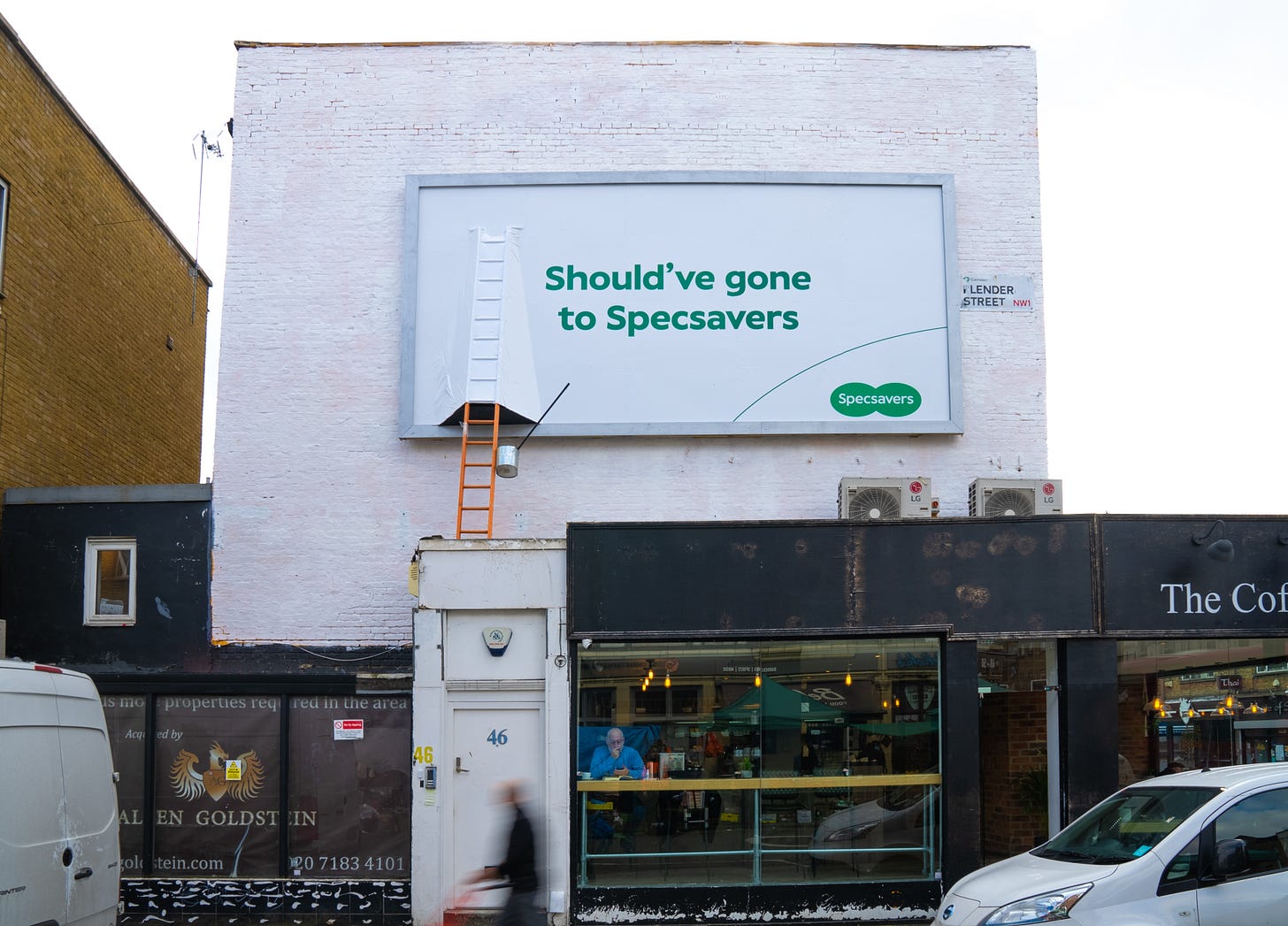For the latest piece in our Insight series at ihalc.com, I spoke to Specsavers’ Head of Creative Operations Julia Arenson about the evolving role of the Specsavers in-house agency and how it makes and measures great creative work.
Here’s a taste of what we spoke about - read the full interview here.
PB: How do you prioritise and also categorise different types of work that you get asked to do?
JA: We are in the midst of introducing the tiering our work in three pillars, which we're calling Create, Calibrate and Deliver. Requests come at us from everywhere, and anywhere in the business – if anybody needs something they come to us. By establishing these tiers, we’re putting some guardrails around the team that you will have, depending on the type of work that you request. So if you're in the Create area, that basically means we're doing new strategic work, we need a new concept, we need to create some new assets. So you get your client partner, your creative producer, your creative director, and your strategist. It’s a completely different process than we have for Calibrate and Deliver. Calibrate is applying existing guidelines or using existing assets. Before, we just had create and deliver and what we were finding was that our strategists, and our conceptual thinkers, were spending a lot of time just applying what they already know. And it just meant that the work that we needed to focus on conceptually and strategically was suffering. So we took that out, and we've moved it into what we're calling Calibrate, with a new set of project managers to manage that work. For Deliver, you’ll go through a studio manager, there should be no amends, it should just go through. So it's really, really establishing our tiers of work to operate in the most efficient way and have the right people spending the right amount of time in their areas where they're going to have the most impact on the work. We're trialling it slowly on projects, where we’ll ask, Okay, are we creating something new? Okay, that's going to go through that process. Are we applying something we already know? Or are we just sending something out?
It's really clear on our processes in terms of when people get involved. People want to do beautiful bespoke work, of course we do. But at the end of the day, we've got to send it to like millions of people in all these different formats. So it's really important that we're involving people at the right stages. The people in Deliver will be our production artists, or art workers. They’re there to adapt something so it doesn't get signed off by a creative director or design or anything like that. The assumption is that once we have a master signed off, and we're ready to adapt, that is it, the production art team will just send it out.
It was really important that people in every department know what their role is, and making sure that they're delivering the best possible work and also to know who to escalate to, if they think that actually maybe that work’s not right. So everybody's very, very clear on their roles and responsibilities in those different areas by the request type.
PB: How do you assess creative work?
JA: We have got a creative scale, it's in every single meeting and it goes from one to 10, one being toxic, and 10 best in the world. We have that in all of our meeting rooms in the agency, and we get together with the marketing team every six to eight weeks and we put our work up on the walls. We look at all that work together and we go around the room and people give it their number on that scale. And then we ask where could that have been if we had maybe done something slightly differently? And where do we want our work to be next time? A lot of the time you have your heads down, you're trying to just get the work done, you're trying to do great work, so this is a chance to lift our heads up and ask what we want the work to be and how do we get there?
What do we love about this campaign? Where do we feel like we could have done more? If there’s stuff that hasn’t gone live yet, do we feel good about it? Do we need to change it? So it's about being in the moment and lifting your head, but also looking back and assessing and creating those spaces to do that together.
UPCOMING
In the next episode of IHALC’s free online series we’ll be discussing how to plan and execute brilliant, effective content in-house. Join Claire Dormer, Head of Content at TUI Group; Christopher Bedson, Senior Director Content Creation at Calvin Klein and Niall O'Rourke O’Rourke, Content Lead, The National Lottery at Camelot as we discuss all things content. In partnership with Adobe Workfront. Register here
Great work, in-house. IHALC's autumn One-Day Summit on September 28 is devoted to exploring how to brief, create and produce brilliant creative in-house. Our unique in-person event for leaders of in-house agencies, in partnership with Adobe Workfront, will focus this time on what it takes to make great work. With case studies, Q&As, and structured round-table sessions led by the experts at WDC, we will explore everything it takes to make great creative work in-house. Please register here







